Abstract
The authors describe an investigation, started in Greece in the autumn of 1953 and continued during the 1954 malaria-transmission season, to determine the variations in the susceptibility to DDT of the anophelines in different localities, with a view to establishing a point of departure which would make it possible to follow any future changes in susceptibility to this insecticide.
The degree of susceptibility of the mosquitos to DDT was assessed numerically by both the technique of topical application of microdoses of the insecticide and the technique devised by Busvine & Nash. The villages of Elos and Asterion (Skála area), the Agoulinitsa area, and the Georgioupolis (Crete) area were chosen for the investigation.
The findings disclosed considerable differences in the susceptibility to DDT in the above areas, but showed that, on the whole, the tendency for anophelines to acquire resistance to DDT seemed to be continuing in Greece.
Full text
PDF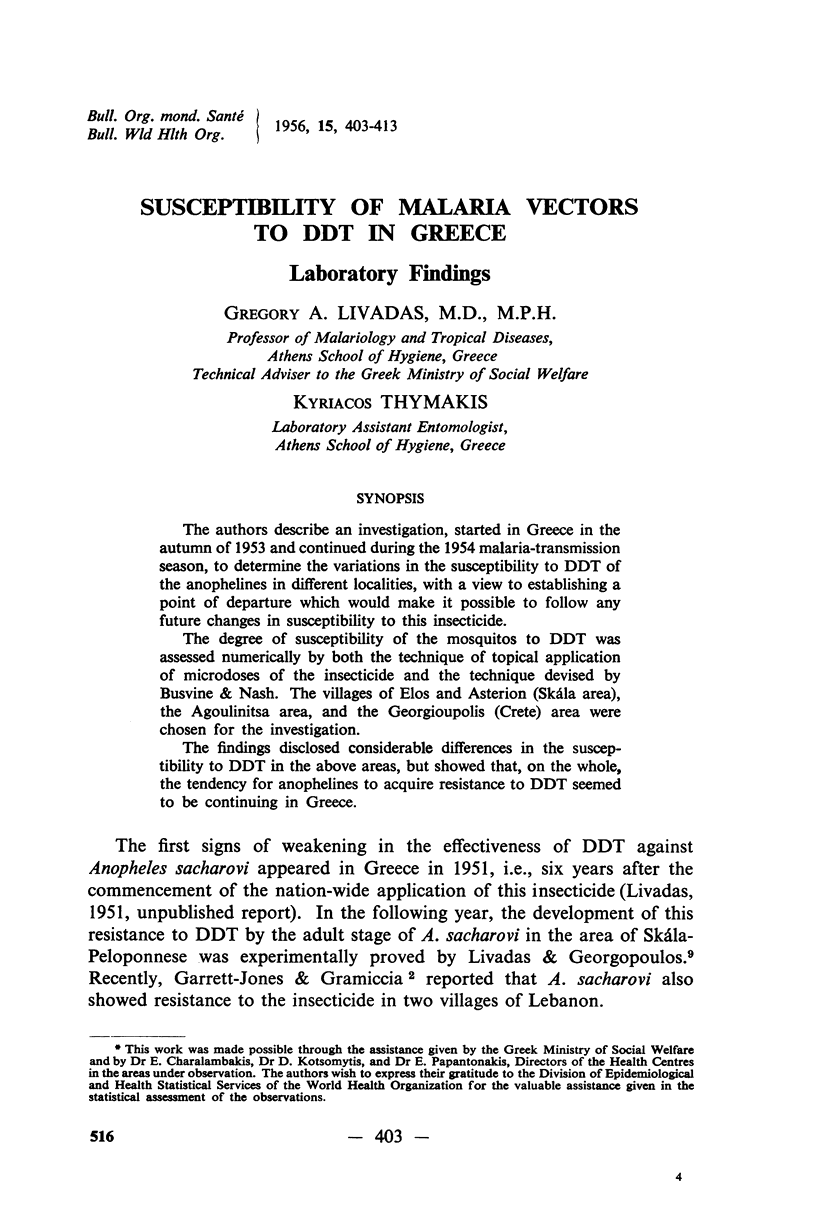
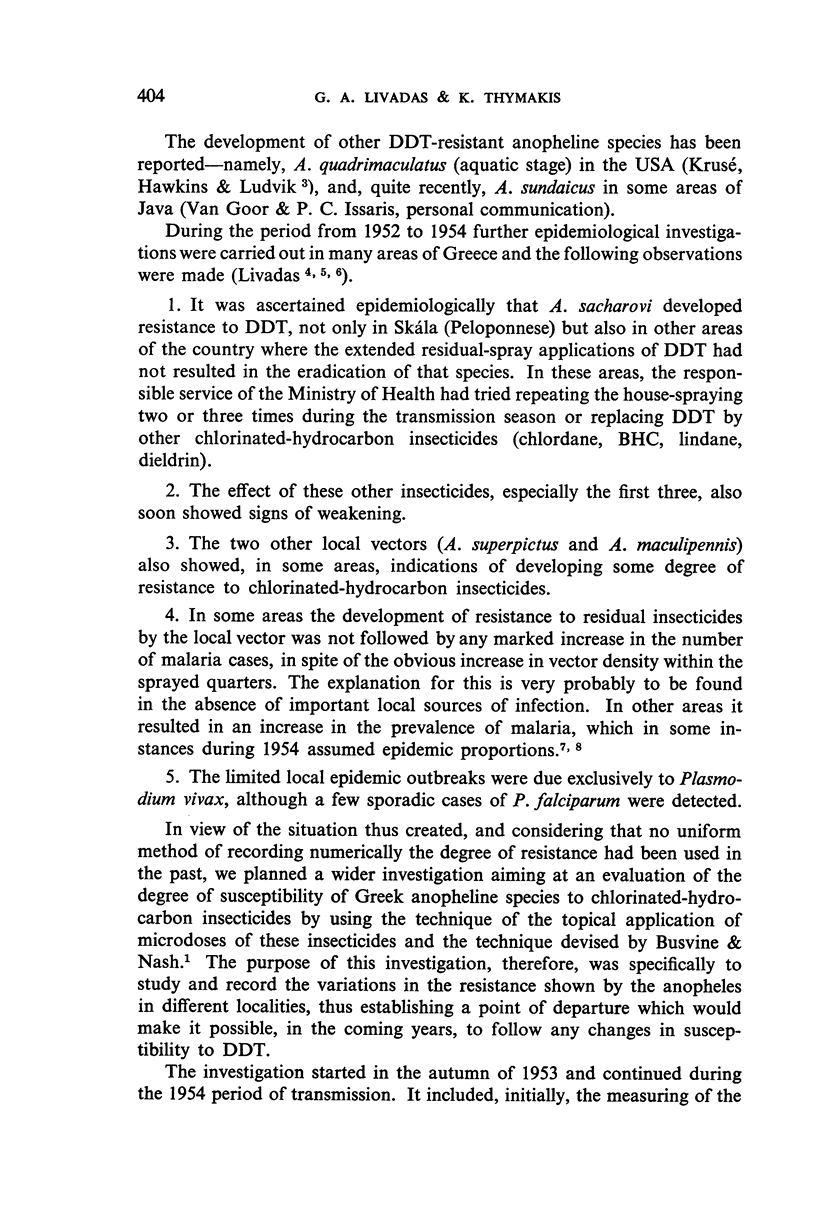
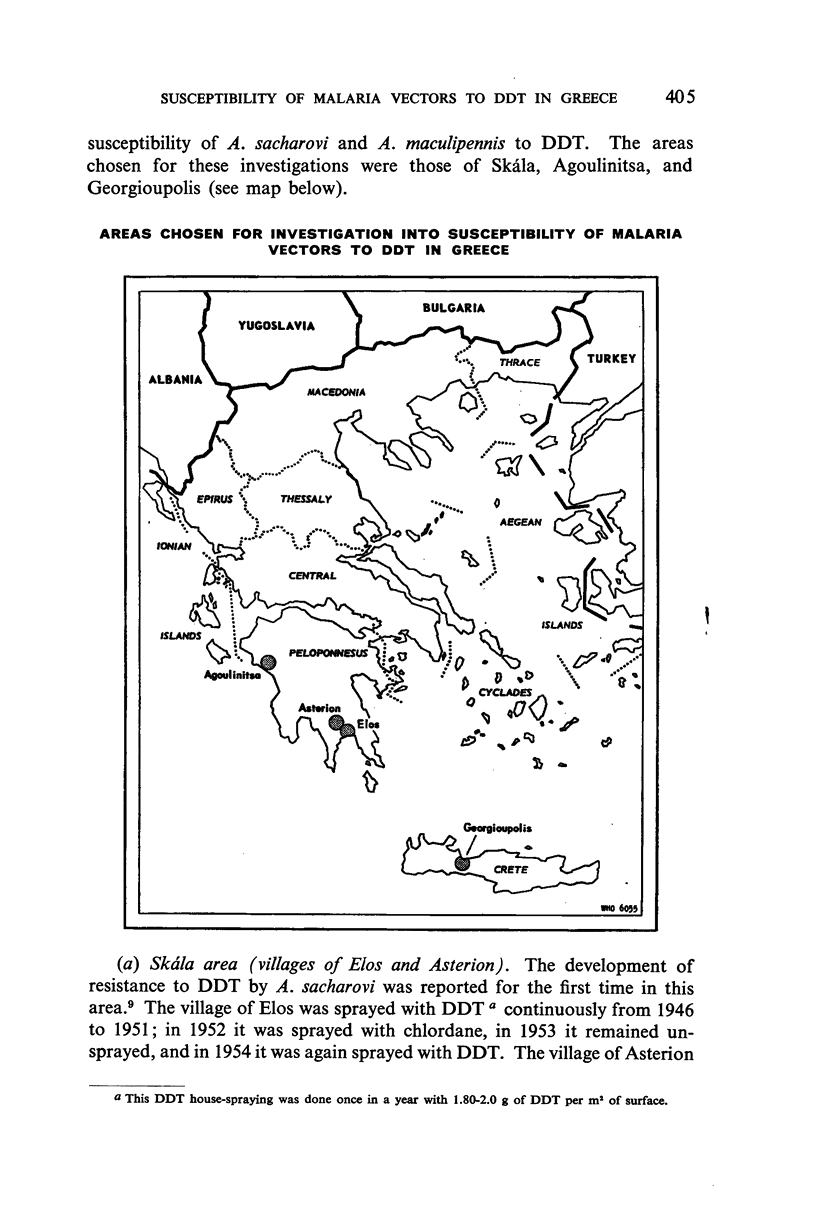
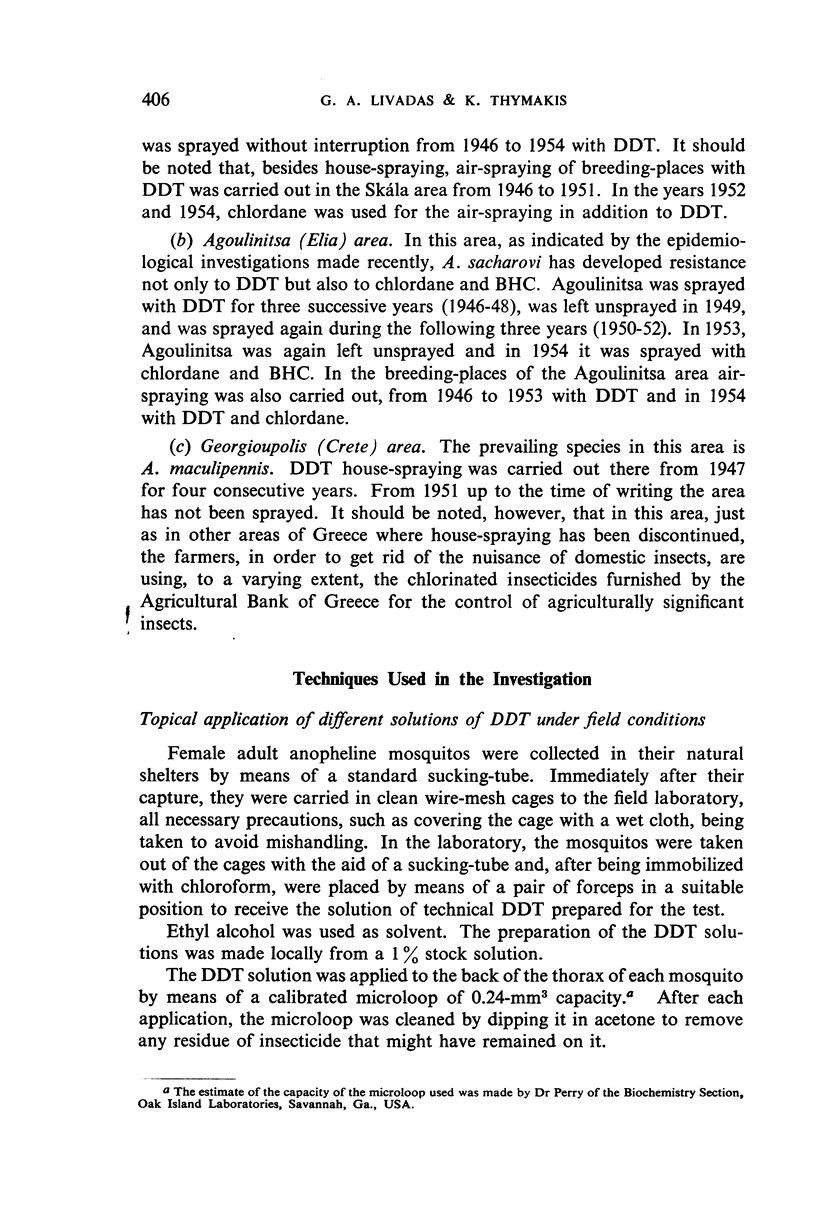
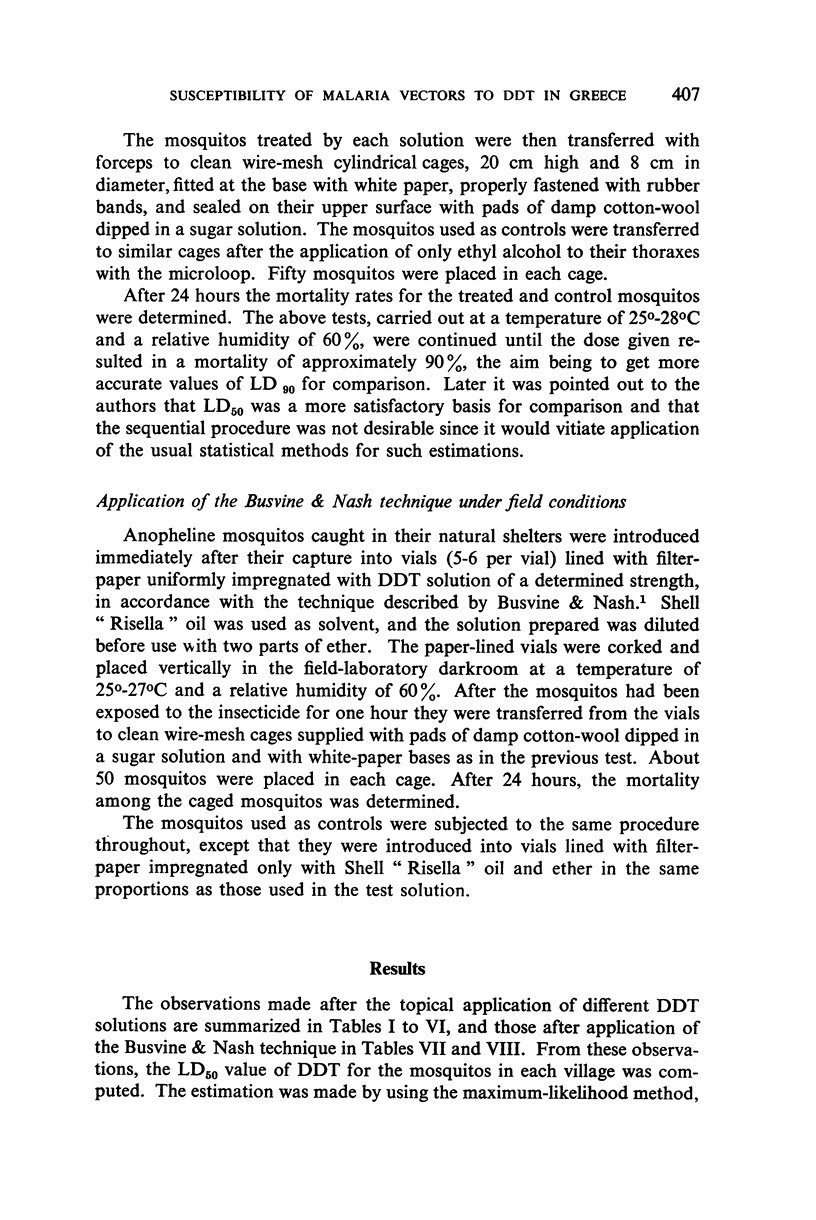
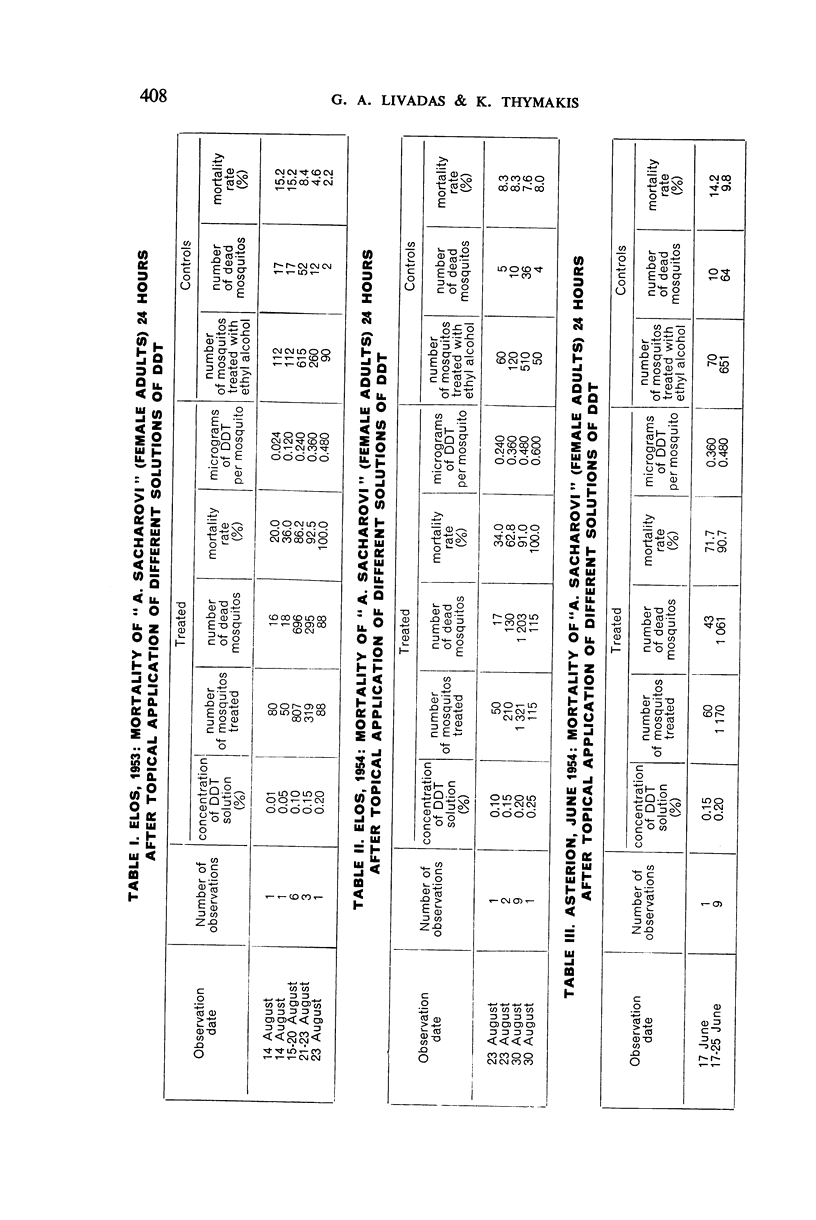
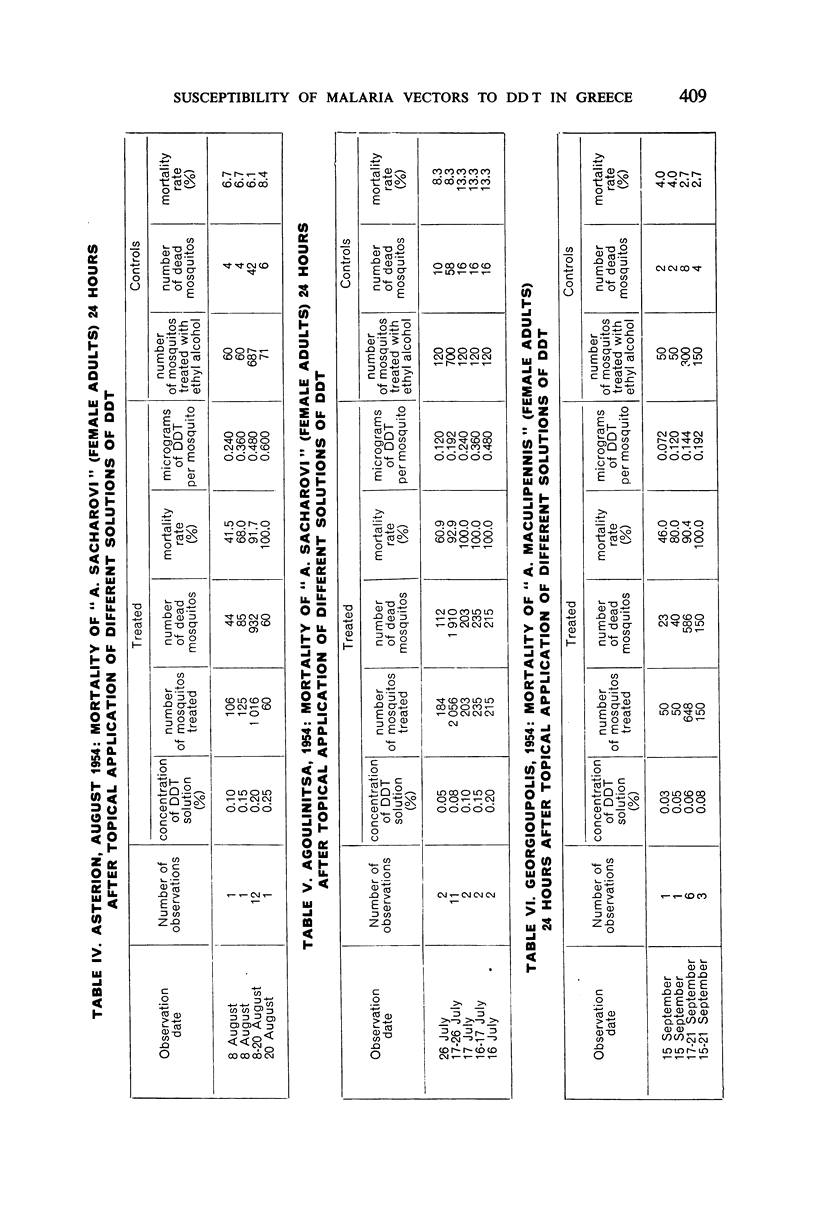
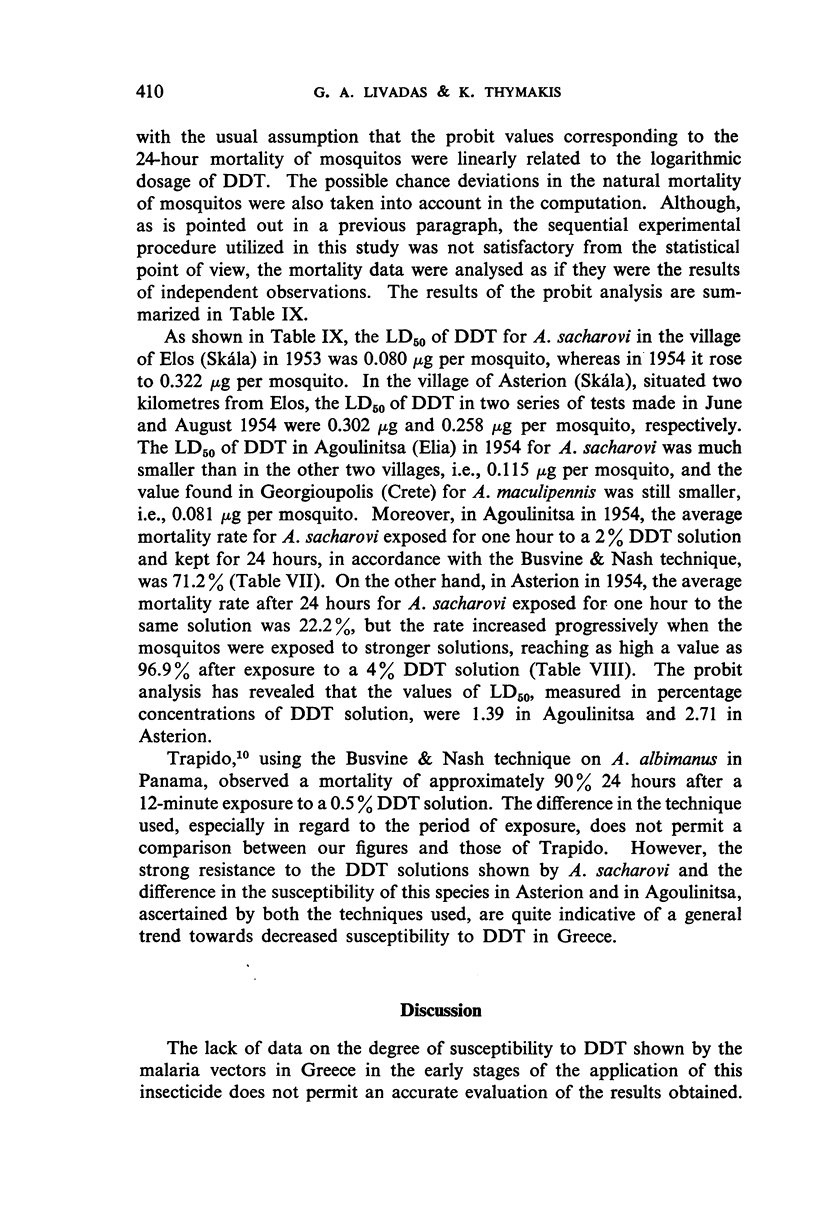
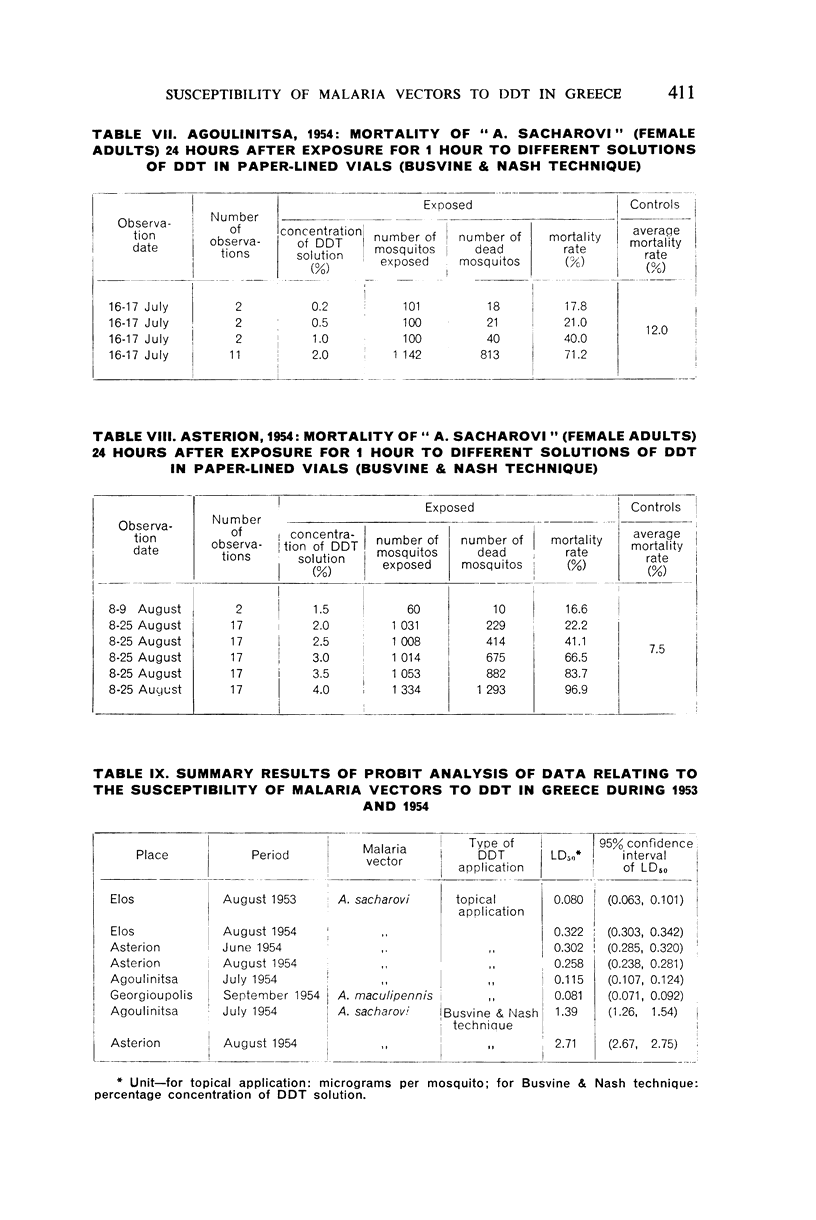
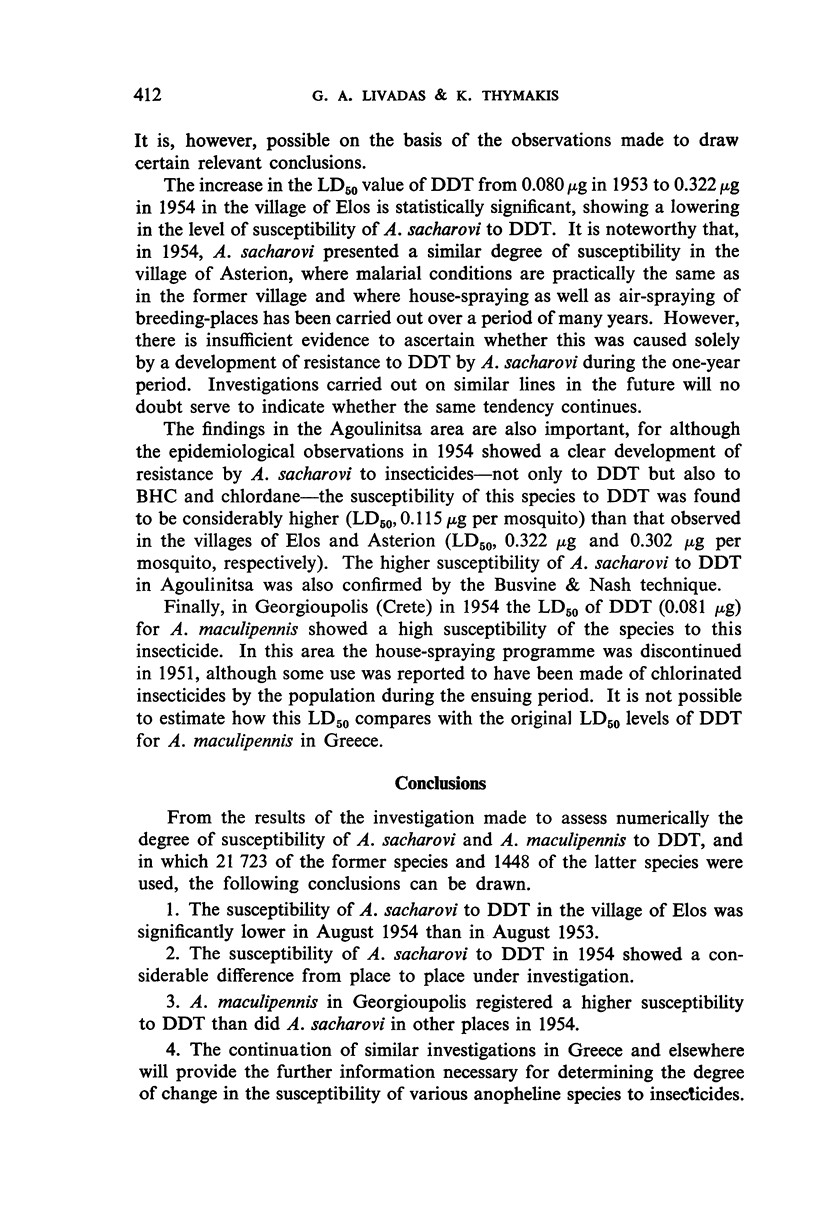
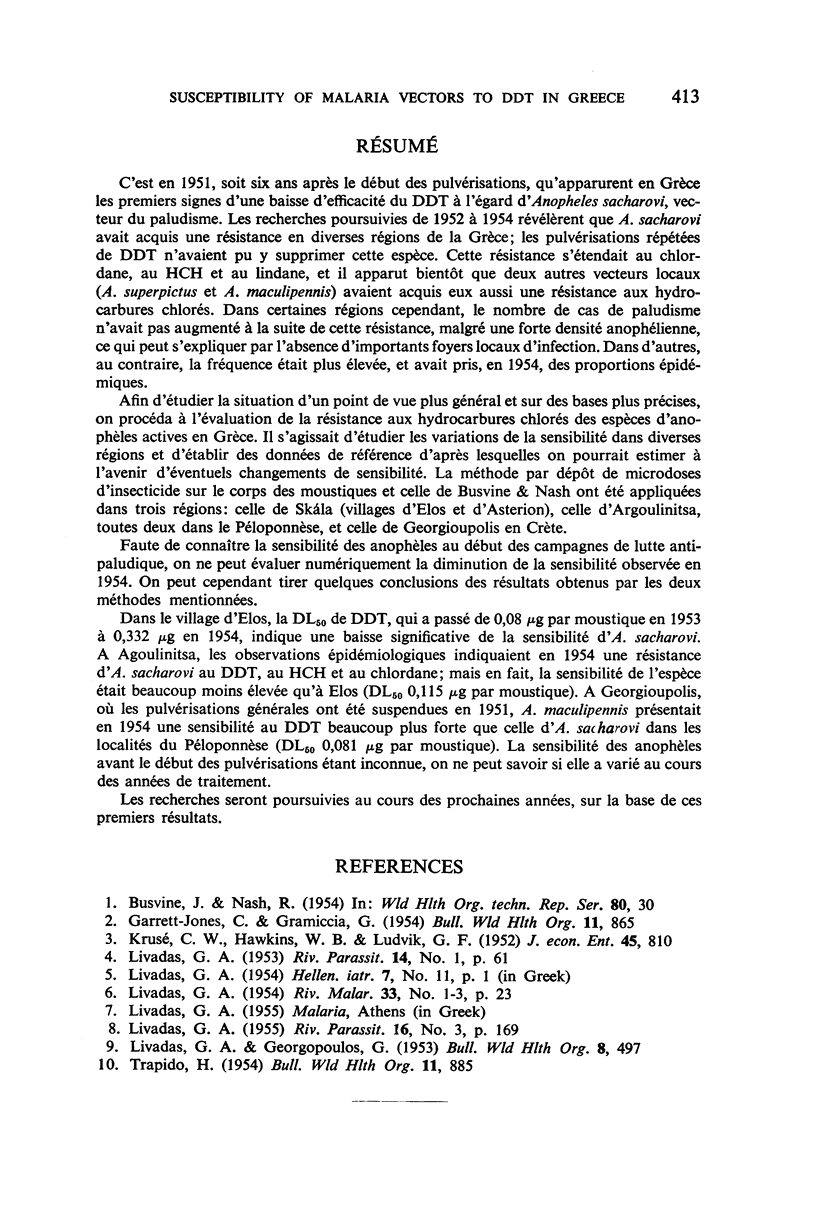
Selected References
These references are in PubMed. This may not be the complete list of references from this article.
- GARRETT-JONES C., GRAMICCIA G. Evidence of the development of resistance to DDT by Anopheles sacharovi in the Levant. Bull World Health Organ. 1954;11(4-5):865–883. [PMC free article] [PubMed] [Google Scholar]
- LIVADAS G. A., GEORGOPOULOS G. Development of resistance to DDT by Anopheles sacharovi in Greece. Bull World Health Organ. 1953;8(4):497–511. [PMC free article] [PubMed] [Google Scholar]
- TRAPIDO H. Recent experiments on possible resistance to DDT by Anopheles albimanus in Panama. Bull World Health Organ. 1954;11(4-5):885–889. [PMC free article] [PubMed] [Google Scholar]


